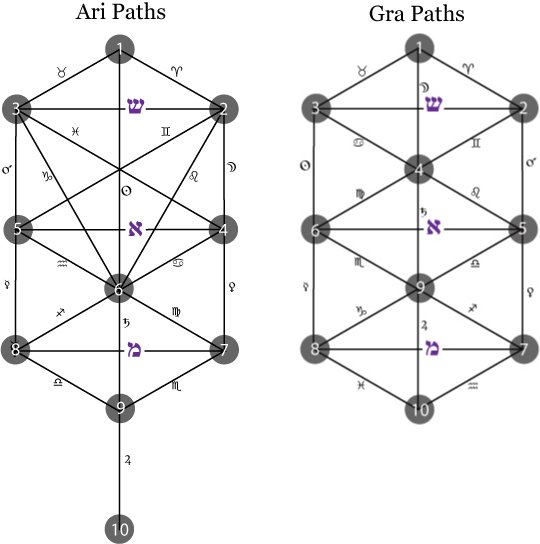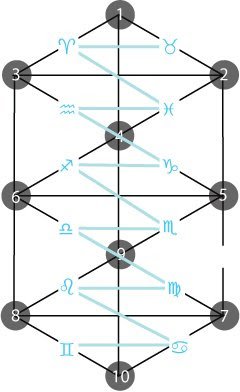Traditionally attributed to Moses, and with the earliest physical manuscripts dating to the 6th Century, the Sefer Yetzirah is without question the oldest and most arcane of all Kabbalistic texts. Unlike the more theoretical Kabbalah approach of the Zohar, the Sefer Yetzirah is to be considered a meditative and magical text. Aryeh Kaplin writes:
Careful study indicates that the Sefer Yetzirah is a meditative text, with strong magical overtones. This position is supported by the earliest Talmudic traditions, which indicate that it could be used to create living creatures. Especially significant are the many reports and legends in which the Sefer Yetzirah is used to create a Golem, a sort of mystical android.
Part of the mystery surrounding the text stems from how it is written; in many cases the grammar closely resembles the imperative. Most commentaries read the text in the third person, “He combined”, “He sealed”, and “He formed”, and thus understand it as a cosmological account of creation. However, these passages can also be read as “combine”, “seal”, and “form” as if the author were giving direct magical instructions. Of course this dual interpretation fits perfectly with the initiated understanding of creation, not as a forgotten act of the past, but rather as the path to spiritual immortality.
Below is a practice developed directly from the Short Version of the Sefer Yetzirah (Chapter 1.13). It pertains to the six lower sefirot as the principles of infinite directionality. Like the various Pentagram Rituals of the Western Magical traditions, this practice is intended to orient the initiate’s sense of Self to the center of the six-directions of space.
RITUAL: Sealing of the Hexagram
i. Seal Above. Contemplate the infinite depth of space above. Seal it while vibrating YHV.
ii. Seal Below. Contemplate the infinite depth below you. Seal it with YVH.
iii. Seal East. Contemplate the infinite depth before you. Seal it with HYV.
iv. Seal West. Contemplate the infinite depth behind you. Seal it with HVY.
v. Seal South. Contemplate the infinite depth to your right. Seal it with VYH.
vi. Seal North. Contemplate the infinite depth behind you. Seal it with VHY.
The permutations of the three letters of the Tetragrammaton differ amongst the various versions of the text; they are for the most part to be understood as differences in perspective, or ‘rotations’, of the same six-pointed star. The exception is the Long version, which is likely a mistake since YVH is repeated twice. According to Kaplan, the Long version was likely the same as the Gra.
A final note on the pronunciation of the triads; if the practitioner subscribes to the Leanora Leet’s argument that the letters of the Tetragrammaton were intended as signifiers of the three long vowels, then the resulting EY-AH-UW vibrations of the practice come very close to some of the long strings of Voces Magicae from the Greco-Egyptian Magical texts, particularity those invoking ΙΑΩ .
He chose three letters
from among the Elementals
And He set them in His Great Name
and with them, He sealed six extremities.
Five: He sealed “above” and faced upward
and sealed it with YHV.
Six: He sealed “below” and faced downward
and sealed it with HYV.
Seven: He sealed “east” and faced straight ahead
and sealed it with VYH.
Eight: He sealed “west” and faced backward
and sealed it with VHY.
Nine: He sealed “south” and faced to the right
and sealed it with YVH.
Ten: He sealed “north” and faced to the left
and sealed it with HVY.Gra Version, Sefer Yetzirah 1:13
Originally published October 12, 2009 in Reflections from the Black Stone









